Traveling for business can be exciting and rewarding, but it also comes with its fair share of expenses. Keeping track of all these expenses can be a daunting task, especially when it comes to getting reimbursed by your employer. This is where travel expense reports come in handy.
In this guide, we will explore what travel expense reports are, why they are important, how to create and use them effectively, and provide some tips for successful expense reporting.
What are Travel Expense Reports?
A travel expense report is a document that helps you detail and organize your business travel expenses, including mileage, airfare, accommodation, meals, and other miscellaneous costs. It serves as a record of your expenses and acts as supporting documentation when submitting reimbursement requests to your employer.
By using a travel expense report, you can easily track and manage your corporate travel spending, ensuring that you are accurately reimbursed for your business-related expenses.

Why are Travel Expense Reports Important?
travel expense reports are essential for several reasons.
- Firstly, they provide a clear and organized overview of your business travel expenses, making it easier for your employer to review and process your reimbursement requests.
- Additionally, these reports help you stay within your travel budget and identify any areas where you may be overspending. By keeping track of your expenses, you can also identify any tax-deductible items and maximize your potential tax savings.
- Lastly, travel expense reports serve as a valuable tool for future reference and audit purposes, ensuring that you have a comprehensive record of your business travel expenses.
How to Create a Travel Expense Report?
Creating a travel expense report is a straightforward process.
Here’s a step-by-step guide to help you get started:
1. Determine the Format
Decide whether you want to create a digital or paper-based expense report. Digital formats may include spreadsheets or expense management software, while paper-based reports can be created using templates or forms.
2. Gather Receipts and Documentation
Collect all your receipts, invoices, and other supporting documents for your business travel expenses. Make sure to keep them organized and easily accessible, as you will need them when filling out your expense report.
3. Include Essential Information
Start your expense report by including your name, employee ID or number, department, and the period covered by the report. This information helps your employer identify and process your reimbursement request.
4. Categorize Your Expenses
Divide your expenses into different categories, such as transportation, accommodation, meals, and miscellaneous expenses. This categorization makes it easier to analyze your spending patterns and identify any areas where you may need to cut back.
5. Provide Detailed Descriptions
For each expense, provide a detailed description of the purpose and nature of the expense. This helps your employer understand the business purpose behind each expense and ensures that they are in line with company policies.
6. Calculate the Total Amount
Sum up all your expenses for each category and calculate the total amount spent during your business travel. This total amount will be the basis for your reimbursement request.
7. Attach Supporting Documentation
Attach all the receipts and supporting documentation to your expense report. Make sure they are legible and easy to read. This documentation serves as evidence of your expenses and helps validate your reimbursement request.
8. Review and Submit
Before submitting your expense report, double-check all the information, calculations, and attachments. Ensure that everything is accurate and complete. Once you are satisfied, submit your expense report to your employer for processing and reimbursement.
Examples







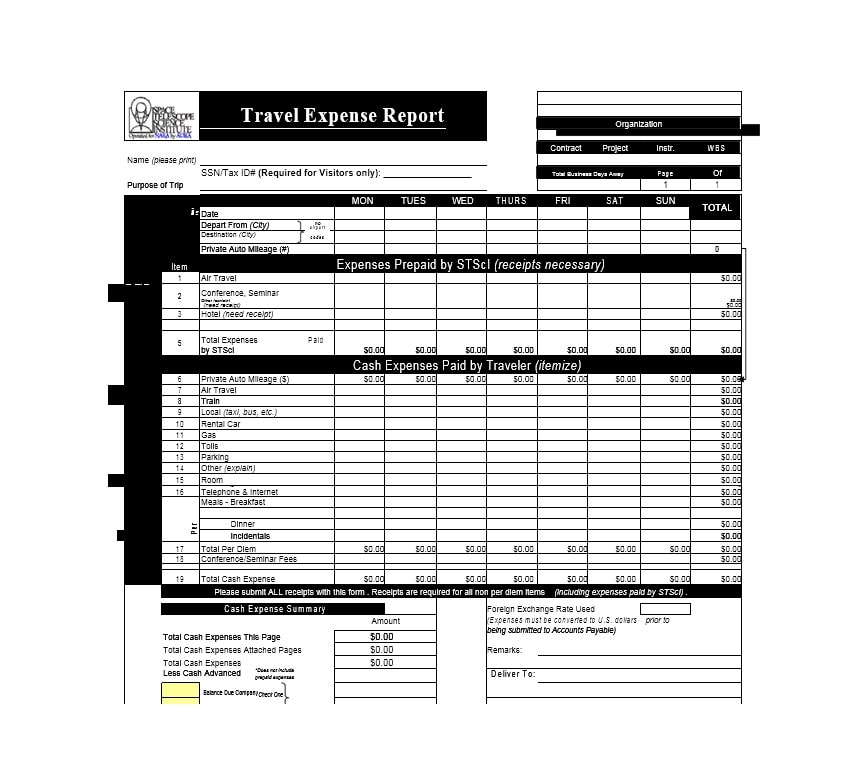






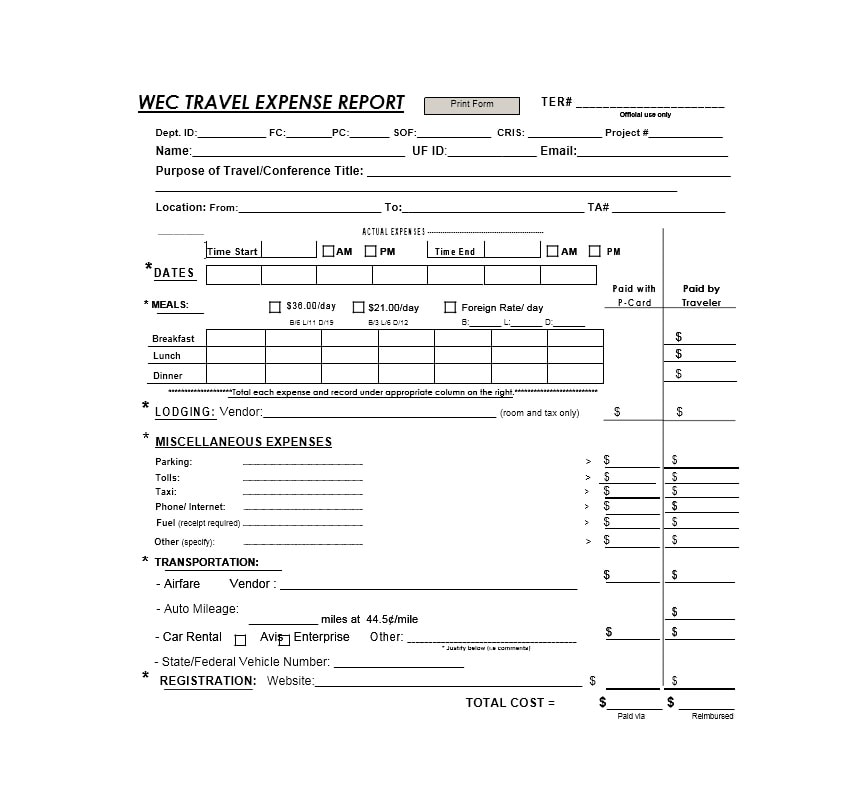


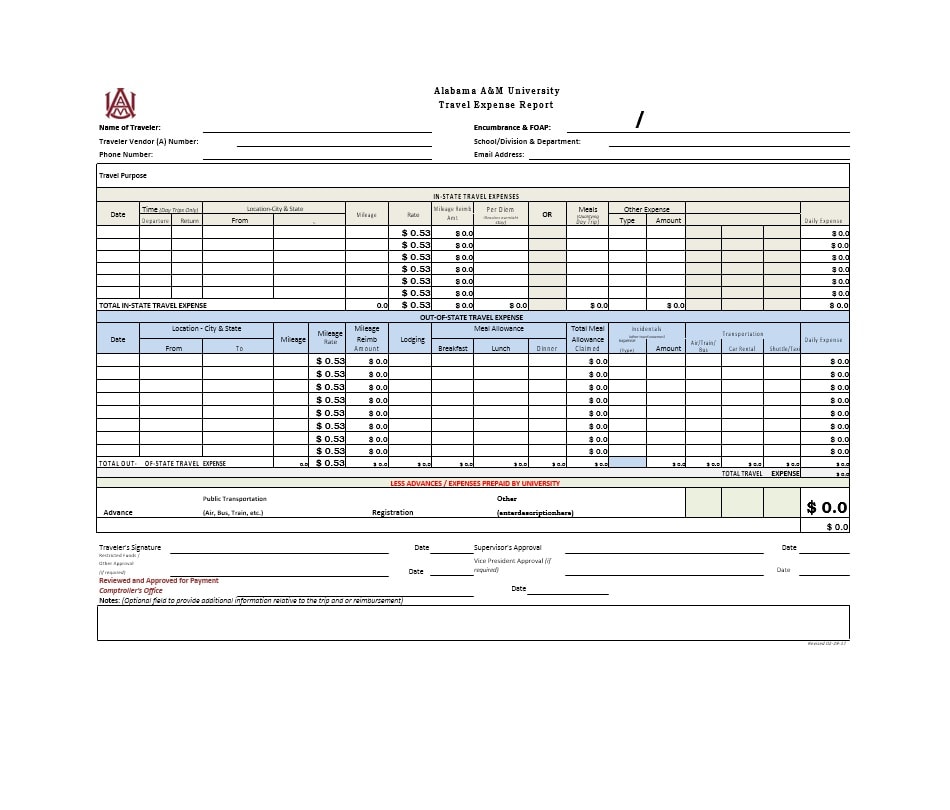









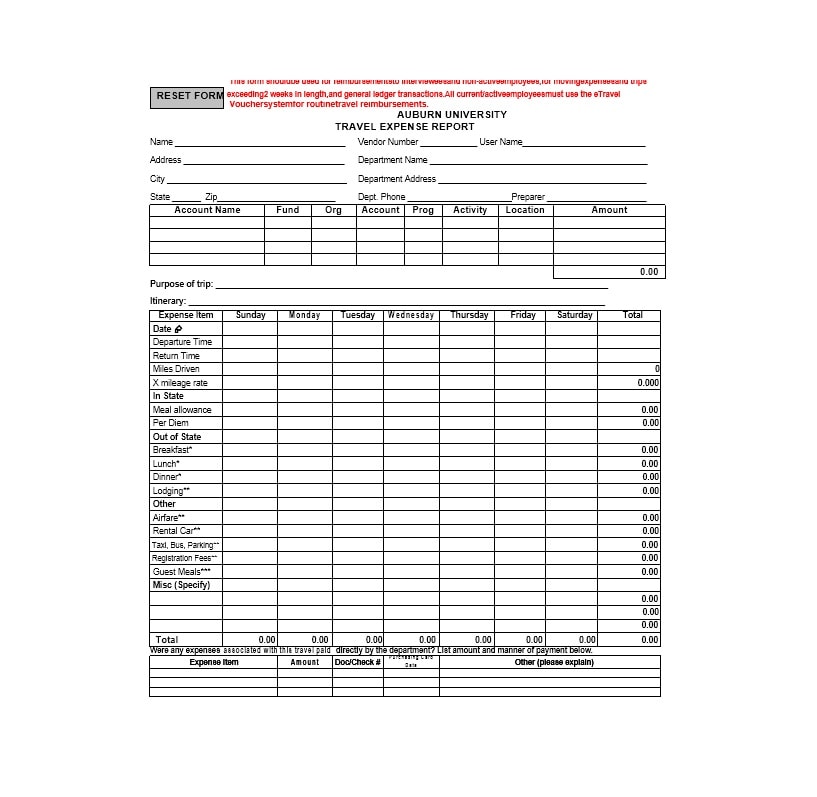






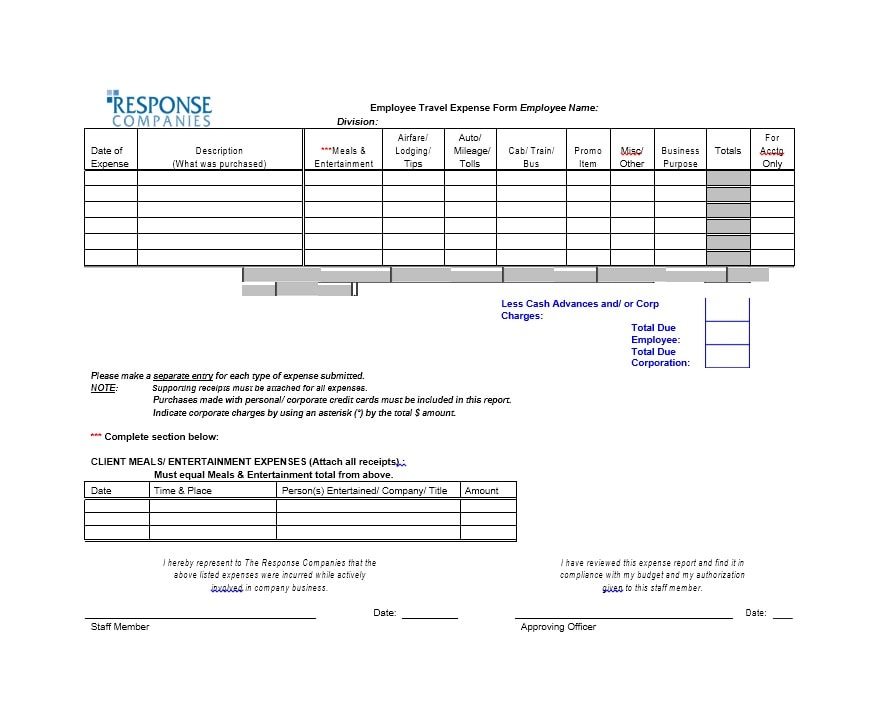








Tips for Successful Expense Reporting
Here are some tips to help you create and submit accurate and successful expense reports:
- Keep receipts organized: Store your receipts in an organized manner, such as using an envelope or digital folder, to ensure easy retrieval and reference.
- Submit reports promptly: Try to submit your expense reports as soon as possible after your business trip to avoid delays in reimbursement.
- Be detailed and specific: Provide clear and detailed descriptions for each expense, including the business purpose and the individuals involved, if applicable.
- Follow company policies: Familiarize yourself with your company’s expense reimbursement policies and guidelines to ensure compliance.
- Double-check calculations: Review all calculations to avoid any errors that may impact the accuracy of your reimbursement request.
- Keep copies: Make copies of your expense reports and supporting documentation for your records.
- Communicate with your employer: If you have any questions or need clarification regarding the expense reporting process, don’t hesitate to reach out to your employer for assistance.
In Summary
Travel expense reports are invaluable tools for tracking, managing, and getting reimbursed for your business travel expenses. By creating and using these reports effectively, you can ensure accurate reimbursement, stay within your travel budget, and maintain a comprehensive record of your corporate travel spending.
Remember to keep your expense reports organized, follow company policies, and provide detailed descriptions for each expense. With these tips in mind, you’ll be well-equipped to navigate the world of business travel expenses and expense reporting.
Travel Expense Report Template – Download